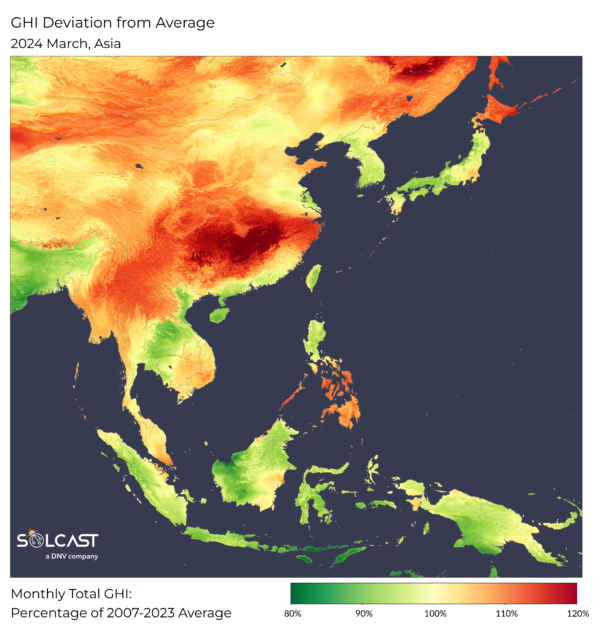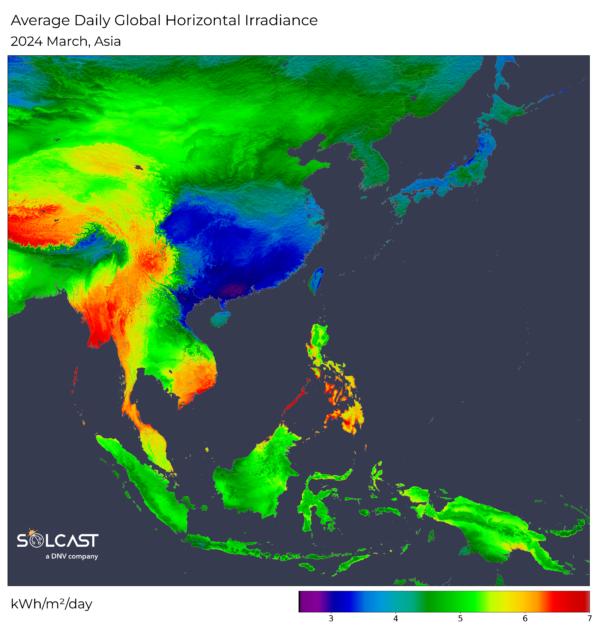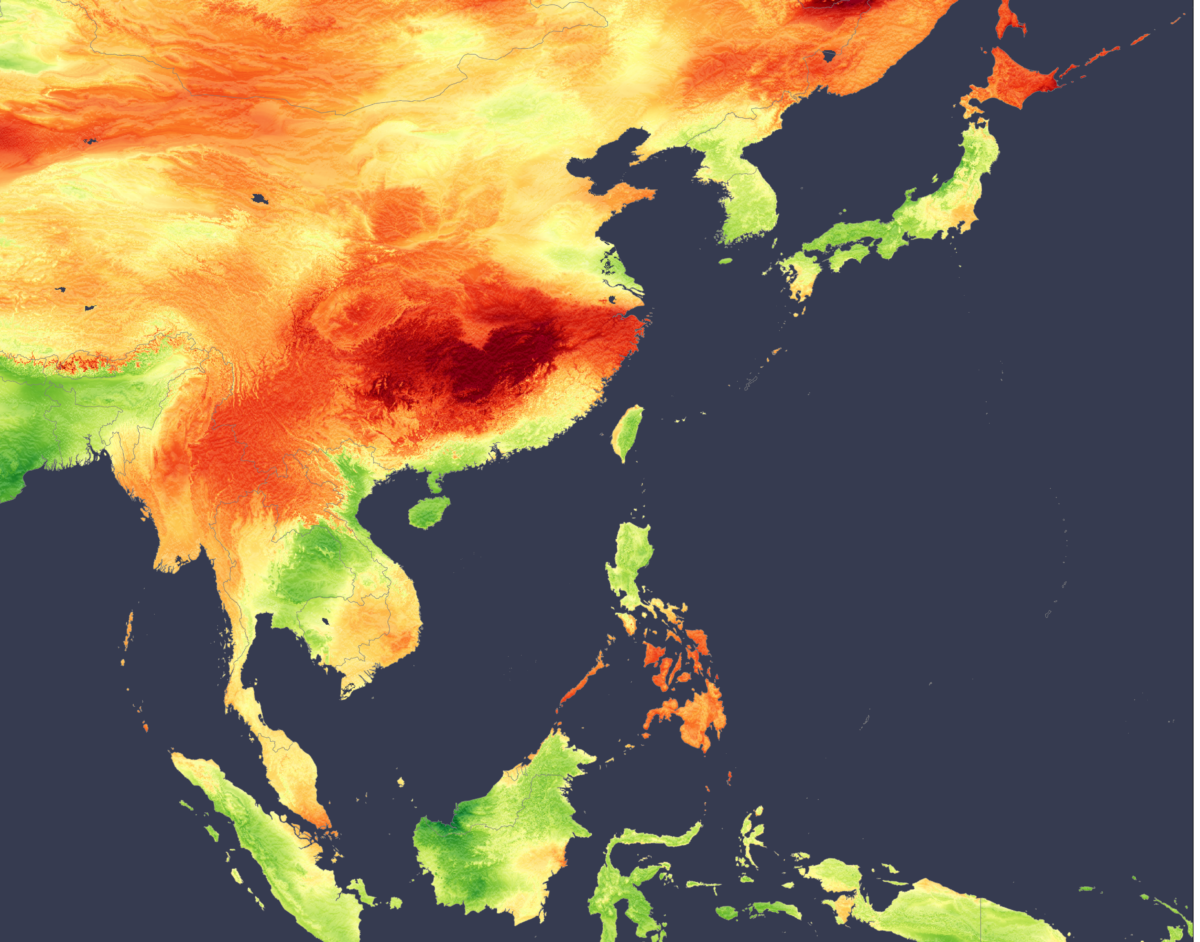March weather patterns in Asia saw notable shifts due to jet stream movements and an extended monsoon season, impacting solar energy potential across the region, according to analysis using the Solcast API.
In Japan, the southward shift of the jet stream led to increased solar irradiance in Hokkaido, where levels were 10-20% higher than usual for March. This unusual sunniness in the northern island contrasted with conditions in the southern islands such as Okinawa, where
irradiance dipped by up to 10% below average due to enhanced low-pressure systems channelling Pacific moisture and increasing cloud cover.

South Korea, shielded by Japan from the brunt of these moist Pacific systems, experienced only slight reductions in solar irradiance. This minor change underscores the localized nature of weather impacts on solar energy resources, highlighting the importance of high-resolution weather data for energy modeling.
The South China Sea also played a critical role in shaping weather patterns this season. Warm sea surface temperatures and disturbances increased onshore moisture along China's southern coast, and leaving less cloud cover in southern Vietnam and the southern Philippines, increasing irradiance by 5-15% on long term averages. Inland China, despite the ongoing large wildfires in Sichuan, recorded a significant 10-20% increase in irradiance, attributed to reduced aerosol loads compared to previous decades.

Meanwhile, the Southern Hemisphere experienced a longer-than-normal monsoon season, adversely affecting solar irradiance in Malaysia, Indonesia, and Papua New Guinea, where levels were 5-15% below average. This prolonged season brought not only decreased
irradiance but also increased rainfall, complicating solar energy production.
These findings underscore the critical influence of atmospheric phenomena on solar energy generation. The ability to forecast and analyze these changes is vital for managing solar energy resources effectively, particularly in a region as climatically diverse as Asia. As weather patterns continue to evolve, the integration of precise meteorological data and forecasting will become increasingly important in optimizing solar energy strategies across the continent.
Solcast produces these figures by tracking clouds and aerosols at 1-2km resolution globally, using satellite data and proprietary AI/ML algorithms. This data is used to drive irradiance models, enabling Solcast to calculate irradiance at high resolution, with typical bias of less than 2%, and also cloud-tracking forecasts. This data is used by more than 300 companies managing over 150GW of solar assets globally.
The views and opinions expressed in this article are the author’s own, and do not necessarily reflect those held by pv magazine.
This content is protected by copyright and may not be reused. If you want to cooperate with us and would like to reuse some of our content, please contact: editors@pv-magazine.com.



1 comment
By submitting this form you agree to pv magazine using your data for the purposes of publishing your comment.
Your personal data will only be disclosed or otherwise transmitted to third parties for the purposes of spam filtering or if this is necessary for technical maintenance of the website. Any other transfer to third parties will not take place unless this is justified on the basis of applicable data protection regulations or if pv magazine is legally obliged to do so.
You may revoke this consent at any time with effect for the future, in which case your personal data will be deleted immediately. Otherwise, your data will be deleted if pv magazine has processed your request or the purpose of data storage is fulfilled.
Further information on data privacy can be found in our Data Protection Policy.